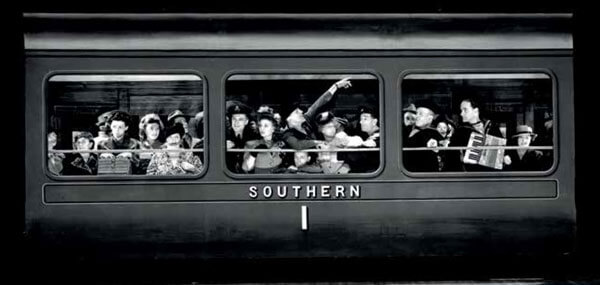Not at your service
The customer isn’t king and never was. Try waiting in till dusk for a delivery promised for “morning” and see how regal you feel. Try flying 13 hours with your knees around your ears and a pong coming from the loos, and ponder the throne-like qualities of seat 45F.
Kings don’t live like that. They snap their fingers and wishes are granted, whims indulged. Little exigencies like profitability, operational logistics, industrial relations and regulatory constraints don’t come into it. But in business they do, they do. So the art is always the delicate reconciliation of outrageous customer desire with pitiful commercial possibility.
Sir Tim Clark, president of Emirates, had a good way of articulating the problem – and finding solutions. When asked why he never commissioned consumer research, he would reply: “We already know what customers want – a four-poster bed and lobster for an economy fare.”
The marketing genius of Emirates in its early days was to find small, overlapping ways to close the desire gap – to help even right-turn passengers feel that, if not royalty, they were still a little special. Touches like choc ices with the movie, on-board Polaroid snaps, gifts on landing and personal video systems in all three cabins were among the many “firsts” that gave the airline a fizzing consumer appeal.
Those micro-innovations needed to be calibrated, considered from an operational and financial viewpoint and weighed in every sense. It was substantive marketing that involved the entire top brass in what was always a lean, intuitive, but disciplined, culture.
Contrast that with the way it’s more usually attempted now in marketing departments – on set-piece “awaydays”, where what the team is most patently away from is reality. Egged on by enthusiastic but commercially illiterate agency attendees, marketers vow in their new brand models to “surprise and delight” their customers, as though the former would automatically imply the latter.
 Well, a customer whose call to her bank or energy supplier was answered in four minutes instead of the usual 40 might be surprised, but delight would start with response times measured in milliseconds. If this customer were queen, that would be little more than a courtesy. And it can’t be achieved anyway. Not the four minutes and probably not even 20. The money isn’t there. Not for that, nor for the other utopian promises filling up the flip chart: the one-click, seamless account-opening process; the personalised, real-time usage audit.
Well, a customer whose call to her bank or energy supplier was answered in four minutes instead of the usual 40 might be surprised, but delight would start with response times measured in milliseconds. If this customer were queen, that would be little more than a courtesy. And it can’t be achieved anyway. Not the four minutes and probably not even 20. The money isn’t there. Not for that, nor for the other utopian promises filling up the flip chart: the one-click, seamless account-opening process; the personalised, real-time usage audit.
Or, conversely, if the money is to be found, the team will need to identify where it comes from, and what might be sacrificed to produce it. Generally, in these blue-sky, anything-goes sessions, neither the will nor the figures are remotely in evidence.
Cannier marketers, more in touch with the basics, or perhaps with a desk not too far from the ops team, accept that the substantive reality may not improve but that “branded service” can set the business apart. So, even though customers still languish in the physical or contact-centre queue, they will sense a distinctive tone and feel when it’s finally their turn.
Even this can be naïve, though. The task of internal brand engagement – getting thousands of employees to embody the brand – is tough and presents an immediate Catch 22: you have to take people away from their posts for the training, which is likely to dent the service standards even further for a while.
That’s if the people are yours to start with. I have seen marketers astonished to learn, too late, that the staff they want breathing the pure brand air are in fact contractors: live-chat agents based in Manila juggling dozens of clients around the world; check-in employees of massive ground-handling firms who don the orange uniform for one shift and swap it for the blue one for the next. Their first duty is to their own employer, and the scope to get them to appreciate the nuances of your brand is zero.
Marketers would do better to spend less time away with the frothy and the fearless making grandiose promises and more time working closely with their own heads of operations, finance and HR – helping them see the brand consequences of their most cherished efficiencies and imagining ways to compromise.
That, in turn, will require marketers to gain more internal clout and credibility. If you think of the corporation as a court, led by its own organisational king or queen, where does marketing sit? Are we the court jesters, short on rigour but long on entertainment and stories about brand celebs? Or are we the diplomats, with dual understanding of the commercial exigencies within – and the pent-up, potentially explosive forces of unfulfilled customer desire outside the gates?
Southern Rail
The train operator’s record is dire: one in three commuters were forced to stand on services arriving into London last year, one in 20 trains were cancelled altogether and, in 2014, its 7.29am service from Brighton to Victoria arrived late on every one of its 240 journeys.
Scottish Power
In the latest Which? survey of customer service brands, Scottish Power was bottom of the heap, propping up npower, BT, TalkTalk, Vodafone and Ryanair. The business, which was fined £18m by Ofgem for “failing to provide even the basic level of service required”, blamed a new IT system.
United Airlines
After the airline’s baggage handlers damaged the custom-made guitar of musician Dave Carroll, his band wrote a four-minute song about the incident and posted it on YouTube, gaining more than ten million views. That finally got an apologetic response from United – something that had not been achieved with countless calls.
